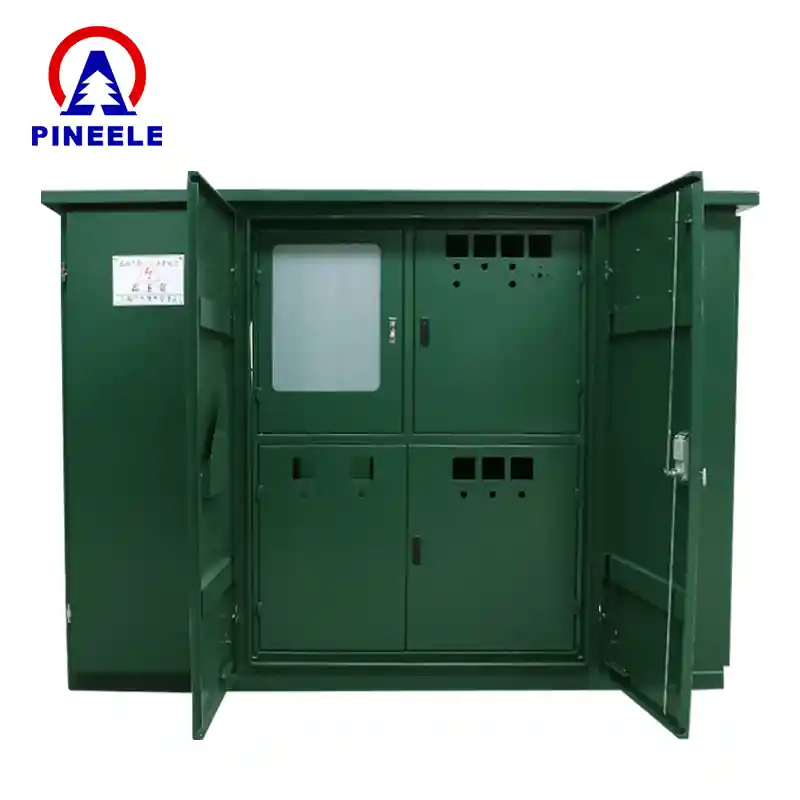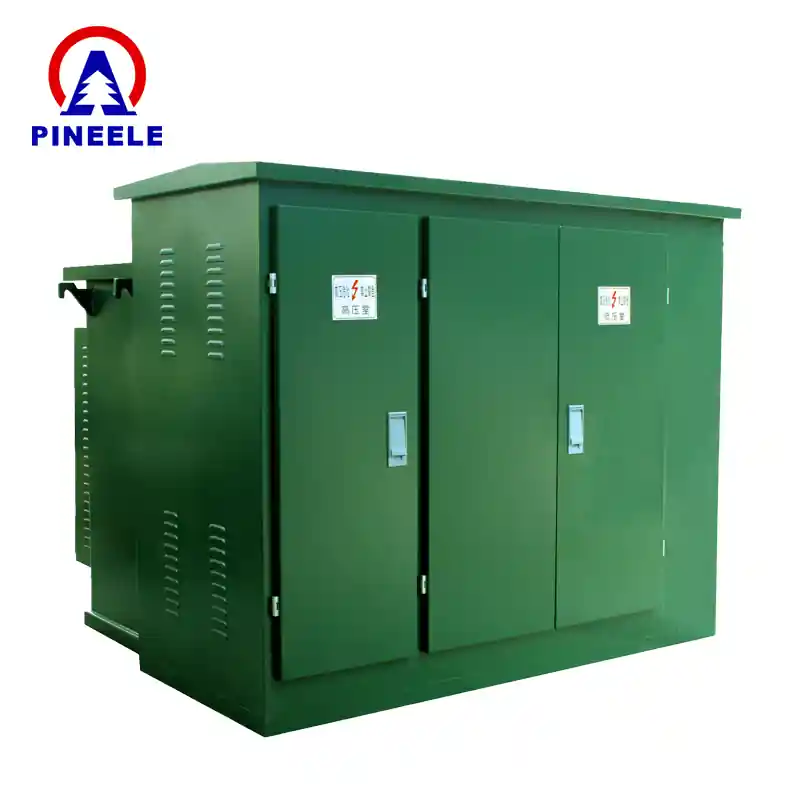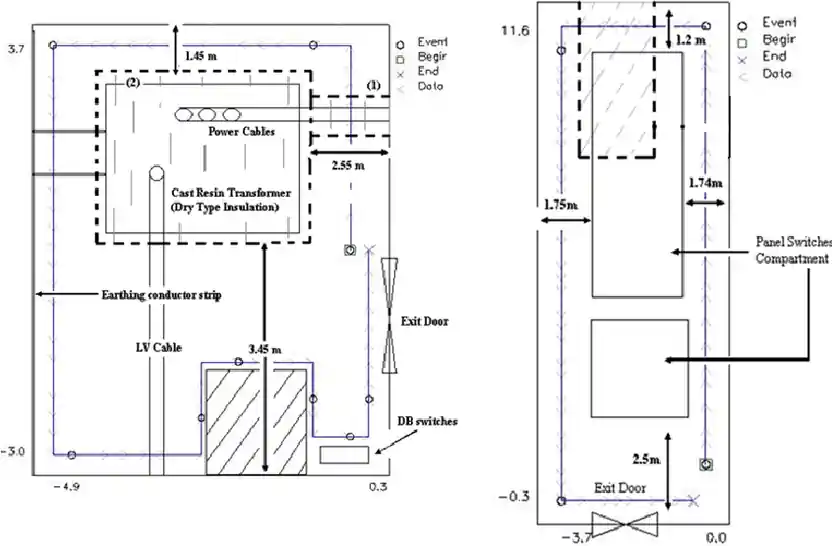
Einführung in das 220-kV-Umspannwerk
A 220 kV Umspannwerk ist eine elektrische Hochspannungsanlage, die für die Übertragung und Verteilung von elektrischer Energie auf einer Spannungsebene von 220 Kilovolt. Sie spielt eine zentrale Rolle im Netz, indem sie die Spannung von der Übertragungsebene (oft 400 kV oder mehr) auf niedrigere Spannungen (wie 132 kV, 66 kV oder 33 kV) für die weitere Verteilung absenkt. Diese Infrastruktur gewährleistet effiziente, zuverlässige und sichere Stromversorgung über große geografische Gebiete hinweg.
Anwendungen und Bedeutung
220-kV-Umspannwerke sind unerlässlich in:
- Nationale Stromnetzeinsbesondere in Ländern mit umfangreicher Infrastruktur.
- Industriegebiete die eine hohe Energiebelastung erfordern.
- Städtische Zentren wo die Stromnachfrage konstant hoch ist.
- Anlagen für erneuerbare Energieninsbesondere Solar- und Windparks, die an das Hochspannungsnetz angeschlossen sind.

Diese Umspannwerke gewährleisten Spannungsregelung, Fehlerisolierungund sichere Stromversorgung, die die Betriebskontinuität von Industrie und Versorgungsunternehmen unterstützt.
Markttrends und Branchenkontext
Nach Angaben der Internationale Energieagentur (IEA) und Daten aus IEEMA (Indischer Verband der Elektro- und Elektronikindustrie)Die Nachfrage nach Hochspannungsschaltanlagen wie 220 kV steigt aus folgenden Gründen:
- Verstärkte Integration erneuerbarer Energien.
- Ausbau der intelligenten Netze.
- Urbanisierung und industrielles Wachstum in Entwicklungsregionen.
Im Jahr 2024 überstiegen die weltweiten Investitionen in die Übertragungsinfrastruktur $300 Milliarden, wobei 220-kV-Umspannwerke einen wichtigen Beitrag zur regionalen Stabilität und zum Lastausgleich leisten.
Technische Daten
| Parameter | Typischer Wert |
|---|---|
| Nennspannung | 220 kV |
| Nennfrequenz | 50/60 Hz |
| Transformator Kapazität | 100 MVA - 500 MVA |
| System-Konfiguration | Doppelsammelschiene / Halbe-Halbe-Unterbrecher |
| Art der Isolierung | AIS (Luftisoliert) / GIS (Gasisoliert) |
| Stromkreisunterbrecher | SF6, Vakuum oder Öltyp |
| Schutzsystem | Relaisbasierte Automatisierung & SCADA |
| Fehlertoleranzkapazität | Bis zu 40 kA für 3 Sekunden |

AIS vs. GIS in 220-kV-Umspannwerken
Es gibt zwei gängige Arten von 220-kV-Umspannwerken:
- AIS (Luftisoliertes Umspannwerk):
Verwendet Luft als Isoliermedium. Wirtschaftlich, wartungsfreundlich, benötigt aber mehr Platz. - GIS (Gasisoliertes Umspannwerk):
Verwendet SF6-Gas für die Isolierung. Kompakt, witterungsbeständig, ideal für städtische Gebiete mit wenig Platz. Höhere Anschaffungskosten, aber geringerer Wartungsaufwand.
Unterschiede zu Unterstationen mit niedrigerer Spannung
| Merkmal | 220 kV Umspannwerk | 132 kV / 66 kV Umspannwerk |
|---|---|---|
| Spannungspegel | Extra hohe Spannung | Hochspannung |
| Transformator Kapazität | Höher | Mittel |
| Position im Raster | Ebene der Übertragung | Ebene der Verteilung |
| Kosten | Hoch | Mittel |
| Fußabdruck | Größer / Kompakt (GIS) | Kleiner |
Auswahlhilfe und Kaufberatung
Bei der Auswahl eines 220-kV-Umspannwerks oder seiner Komponenten ist Folgendes zu beachten:
- Last Nachfrage: Wählen Sie die Kapazität auf der Grundlage von Spitzenlast- und Zukunftsprognosen.
- Platzverfügbarkeit: Verwenden Sie GIS, wenn der Boden begrenzt ist.
- Umweltbedingungen: Staub, Feuchtigkeit und seismische Aktivitäten können die Konstruktion beeinflussen.
- Automatisierung und Überwachung: Moderne Umspannwerke sollten SCADA und IoT-basierte Steuerung unterstützen.
- Einhaltung der Vorschriften: Sicherstellung von Standards wie IEC 62271, IEEE C37und die örtlichen Vorschriften für Versorgungsunternehmen eingehalten werden.
Renommierte Hersteller wie ABB, Siemens, Schneider Elektrischund PINEELE bieten modulare 220-kV-Lösungen, die den internationalen Spezifikationen entsprechen.
Autorisierte Quellen zitieren
- IEEE: Elektrische Energiesysteme
- ABB 220kV Unterstation Lösungen
- Wikipedia - Elektrisches Umspannwerk
- IEEMA-Berichte
FAQ-Abschnitt
Ein 220-kV-Umspannwerk verbindet die Hochspannungsleitungen mit den regionalen Verteilungsnetzen und ermöglicht die Spannungsumwandlung und den Schutz des Systems.
GIS-Unterstationen sparen Platz, sind in rauen Umgebungen zuverlässiger und erfordern weniger Wartung als AIS-Systeme.
220 kV arbeitet mit einer höheren SpannungslösungenDas 132-kV-Netz wird in der Regel in der Übertragungsschicht des Netzes eingesetzt, während 132 kV eher in der Unterübertragung oder Verteilung verwendet wird.
Schlussfolgerung
Die 220-kV-Umspannwerk ist eine entscheidende Komponente in einem modernen Stromübertragungsnetz. Sie sorgt dafür, dass der in Kraftwerken erzeugte Strom effizient über große Entfernungen übertragen und dann für die industrielle oder öffentliche Nutzung heruntergefahren wird. Für Ingenieure, Planer von Versorgungsunternehmen und Beschaffungsteams, die die Netzstabilität aufrechterhalten und den wachsenden Energiebedarf decken wollen, ist es wichtig, ihre Konstruktion, Anwendung und Auswahlkriterien zu verstehen.


